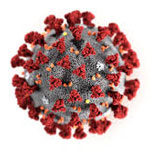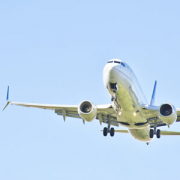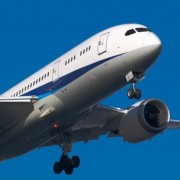COVID-19: Overview of the current situation
Civil aviation is a primary engine of the world travel and tourism sector.
This sector of the economy supports millions of jobs, generates major income, and makes a very significant contribution to the gross national product of many nations.
Because of its impact on the economy, and its importance to overall employment, there is much pressure from the various participants of this industry, firms, individual businesses, etc. to return as rapidly as possible to its previous level of activity.
But in order to achieve some level of return of this economic sector, many issues need to be overcome. This coronavirus is lethal and no vaccine or medication currently exist.
Governments are rightly concerned about the economic impact. People are scared and reluctant to travel – which could increase their exposure and possibility of getting COVID 19.
There is presently a lack of strong leadership internationally. The various parties are acting in their own interests which is potentially disastrous for an international industry that requires overall understanding and cooperation between all countries.
Various governments have established – individually – constraints such as quarantine which requires people to self-isolate for 14 days in order to identify whether or not they have been contaminated by this virus.
Other measures generally required include social distancing – two meters separating people to avoid contamination – and the wearing of face masks which are useful to prevent contaminating other people and, to a lesser extent to prevent an individual from becoming contaminated
Various tests are being used at airports to detect the presence of the virus. The most common test, but probably not the most effective, is to test the temperature of potential travellers upon arrival at the airport.
For the limited travel taking place currently, many countries also require that the potential traveller be interviewed prior to travel and asked to confirm that he/she has had no symptoms of COVID-19 during the last few days and often to swear a declaration as to the reason for travel.
All of that dissuades people from flying.
The major problem we are facing is that there is no coordination at this time between the various nations. There is no overall leadership. The basic air travel related agencies have made proposals, i.e. IATA, ACI, ICAO. The latter will always have difficulty to move quickly because of the need to achieve a consensus of 180 countries which is almost impossible to do in the short term.
However, some agencies have made suggestions designed to assist nations to re-start travelling in a reasonably safe and acceptable way. Various models that have been proposed to increase safety at the airport such as social distancing at check-in and gates, various tests such as temperature checks or requiring a simple declaration concerning one’s own health, and the mandatory wearing of masks. In aircraft cabins, proposed measures include avoiding movement, limiting on-board service to an absolute minimum (either no service or drinks, or something pre-packaged and just handed out), eliminating line ups for washrooms, etc.
Such measures are being proposed by certain airlines in order to reassure governments that there are a number of safety related measures being carried out by the operators designed to guarantee a minimum amount of safety and thereby minimise the potential propagation of the viruses.
Maintaining the current seat density on board violates the usual social distancing rule (2 meters apart), and is therefore considered insufficient by safety agencies.
For any airline, the elimination of the centre seat in a row of three drastically changes the economics of a flight, even with a load factor of 80-90% of the remaining seats. It would make the flight uneconomical whether it is a full service or low-cost airline.
This is one of the major issues being pushed by the carriers and will be a serious stumbling block until such time as alterative, and acceptable, precautions can be agreed on any flight to permit high density seating to continue.
To enable the present seating of an airplane to continue, it has been suggested that cabin air filtering be fully effective and that on-board baggage be eliminated or at the very least, minimized. Other suggestions include limiting the handling by passengers of their own baggage at destination and that baggage be handled in a way that is totally safe for the people working.
There is also be a need for extensively disinfecting the airplane after every use which delays substantially the turnaround time and is likely reduce connections. Low cost carriers need to optimise use of their equipment, and sanitising the airplane at the start and at the end of a flight increases turnaround time.
Boarding and deplaning passengers in order to maintain social distancing will impose additional ground and turnaround time for the airplane.
All airlines are attempting to maximise use of their assets and such conditions may force airlines once again to increase fares in order to better than breakeven.
There is obviously a need for something more sophisticated than a temperature test at the airport prior to departure. Some airports today claim that they can carry out a test in three hours. Three hours is too much to add to the required 2 hours before departure required by the multitude of other tests that need to be undertaken at the airport.
Until an effective vaccine has been developed, there is a need to develop fairly rapidly a reliable, quick test which can be taken on departure and perhaps also on arrival. Of course, this does not remove the risk that one may be subjected to quarantine on his or her return in the event the virus has been contracted a virus during the trip.
Given the usual difficulty to achieve an international agreement, perhaps we should start by establishing a common standard within the Schengen countries, then extend it to the surrounding nations if they wish to join. This could re-start the rules for leisure travel acceptance within Europe, basically. Once they have been established, they could perhaps be extended to other like-minded nations.
Of course, all the other partners in leisure travel such as resorts, hotels, car rental agencies, museums, shows etc. need to be able to demonstrate that they are perfectly safe so as not to discourage travellers.
In short, the customer needs to be completely reassured that in taking that trip he or she can be guaranteed to leave, to meet the requirements, and be accepted at destination. He or she also needs reassurance that the activities to be undertake in that country have been examined and are considered safe from the point of view of the virus, and that the precautions taken in order to protect the customer from the virus are minimally invasive.
Finally, the passenger needs reassurance that he or she will be reaccepted on return to the country of origin.
All this will require a lot of coordination and discussion between the various elements involved in the process but these, in my view, are the basic conditions that need to be met in order to ensure that travel and tourism return to a level where people feel comfortable that taking a vacation or a leisure trip does not represent a risky challenge.




